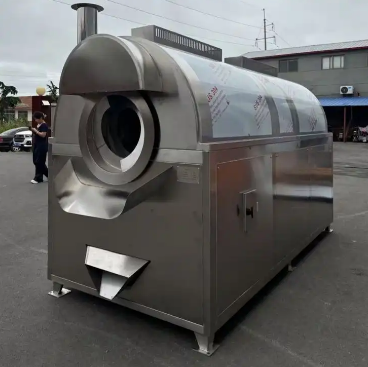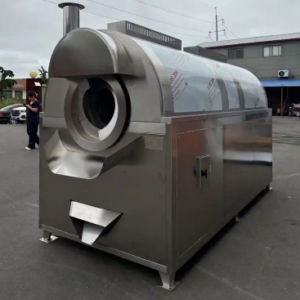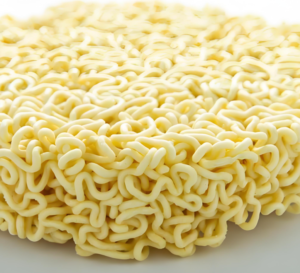<h1>Exploring the Functions of Salt Frying Machines in Industrial Applications</h1>Salt frying machines, also known as salt roasting or stir-frying equipment, play a vital role in modern industrial processes. These machines are designed to heat, roast, or fry salt efficiently, enhancing its quality for various applications. In the B2B sector, businesses rely on them for food processing, chemical production, and more. This article delves into their key functions, benefits, and practical uses to help you make informed decisions.
Salt Frying Machines
ToggleWhat is a Salt Frying Machine?
A salt frying machine is an automated industrial device used to process salt through controlled heating and stirring. It typically features a rotating drum or pan that ensures even distribution of heat, preventing clumping and maintaining product consistency. Originally developed for food-grade salt production, these machines have evolved to handle various salt types, including iodized and sea salt.
At its core, the machine combines mechanical agitation with precise temperature control. This setup allows for efficient roasting or frying, which removes impurities and enhances flavor or texture. For foreign trade professionals, understanding this equipment can lead to better sourcing and integration into supply chains.
Key Functions of Salt Frying Machines
Salt frying machines offer a range of functions that streamline production. One primary function is uniform heating, where the machine maintains temperatures between 100-300 degrees Celsius to roast salt without burning it. This ensures the final product meets industry standards for purity and quality.
Another essential function is continuous stirring or agitation. The built-in mechanisms prevent salt particles from sticking together, promoting even processing. This is particularly useful in large-scale operations, where efficiency directly impacts output volume and cost savings.
Temperature and Time Control Features
Modern salt frying machines come equipped with digital controls for precise temperature and processing time. Operators can set parameters based on the salt type, such as fine table salt or coarse rock salt. This feature minimizes waste and optimizes energy use, making it ideal for eco-conscious businesses.
Additionally, these machines often include safety sensors that automatically shut off if overheating occurs. This not only protects the equipment but also ensures compliance with international safety regulations, which is crucial for exporters.
Moisture Removal and Purification
One of the standout functions is moisture removal, where the machine evaporates excess water from salt crystals. This process improves shelf life and prevents caking, which is a common issue in humid environments. For B2B traders, this means delivering a superior product that commands higher market prices.
Purification is another key aspect, as the machine can integrate filters to remove contaminants like dust or foreign particles. This function is especially valuable in the food and pharmaceutical industries, where purity standards are stringent.
Benefits of Using Salt Frying Machines in Business Operations
Incorporating salt frying machines into your workflow offers numerous advantages. First, they boost productivity by automating repetitive tasks, allowing workers to focus on quality control and innovation. This results in higher throughput, which is essential for meeting global demand in foreign trade.
Cost efficiency is a major benefit, as these machines reduce labor costs and minimize material waste. For instance, precise controls help avoid over-processing, saving on energy bills and raw materials. Businesses targeting international markets can leverage this to maintain competitive pricing.
Enhanced Product Quality and Customization
Salt frying machines enable customization of end products. You can adjust settings to produce flavored salts, such as those infused with herbs or minerals, catering to niche markets. This versatility opens doors for B2B partnerships in sectors like gourmet food and wellness products.
Moreover, the consistent output improves brand reputation. Reliable quality assurance features ensure that every batch meets specifications, reducing the risk of recalls and building trust with clients worldwide.
Sustainability and Environmental Impact
Many modern models are designed with sustainability in mind, featuring energy-efficient motors and recyclable components. This helps businesses reduce their carbon footprint, appealing to environmentally aware customers in the global market.
By optimizing resource use, these machines contribute to greener operations. For example, advanced models recycle heat generated during processing, lowering overall energy consumption and aligning with international sustainability goals.
Applications Across Industries
Salt frying machines are versatile tools with applications in several industries. In food processing, they are used to prepare seasonings for snacks, meats, and baked goods. Their ability to handle large volumes makes them indispensable for manufacturers supplying global retailers.
The chemical industry utilizes these machines for producing industrial salts used in water treatment and detergents. Here, the purification function ensures the salt is free from impurities, meeting strict regulatory requirements.
Use in Pharmaceuticals and Cosmetics
In pharmaceuticals, salt frying machines help create high-purity salts for medications and supplements. The precise control over moisture and temperature prevents degradation, ensuring product efficacy.
For cosmetics, these machines process salts for bath products and scrubs. Their gentle frying process retains natural minerals, enhancing the therapeutic value of the final items.
Agricultural and Water Treatment Applications
Agriculture benefits from salt frying machines in soil conditioning and animal feed production. The machines roast salt to make it more soluble, improving nutrient delivery in fertilizers.
In water treatment, processed salts from these machines aid in softening and purification systems. Their consistent quality supports reliable operations in municipal and industrial water facilities.
How Salt Frying Machines Work: A Step-by-Step Overview
Understanding the operation of a salt frying machine begins with loading raw salt into the hopper. The machine then activates its heating elements, typically gas or electric, to reach the desired temperature.
Next, the stirring mechanism engages, rotating the salt to ensure even exposure to heat. Sensors monitor the process, adjusting variables like speed and temperature for optimal results.
Output and Quality Checks
Once processing is complete, the machine discharges the finished salt into collection bins. Built-in quality checks, such as moisture sensors, verify that the product meets standards before packaging.
This automated workflow reduces human error and speeds up production cycles, making it a smart investment for B2B enterprises.
Maintenance and Safety Considerations
Proper maintenance is key to extending the lifespan of salt frying machines. Regular cleaning of the drum and filters prevents buildup that could affect performance. Schedule inspections every few months to check for wear on mechanical parts.
Safety features, like emergency stop buttons and heat shields, protect operators from accidents. Training staff on these aspects ensures compliance with occupational health standards in international trade.
Frequently Asked Questions
What is the typical capacity of a salt frying machine? Most industrial models handle 50 to 500 kilograms per batch, depending on the size, making them suitable for medium to large-scale operations.
How energy-efficient are these machines? Modern units can achieve up to 80% energy efficiency with advanced insulation and heat recovery systems, helping businesses cut operational costs.
Can salt frying machines process other materials? Yes, they are adaptable for roasting nuts, seeds, or grains, providing versatility for diversified production lines.
What maintenance routine is recommended? Weekly cleaning and monthly lubrication of moving parts are ideal, along with annual professional servicing to maintain peak performance.
Are there customizable options available? Absolutely, manufacturers offer tailored features like automated feeding systems or specific temperature ranges to meet unique business needs.
Conclusion
In summary, salt frying machines are essential tools that enhance efficiency, quality, and sustainability in various industries. By mastering their functions, from precise heating to moisture control, businesses can gain a competitive edge in foreign trade. Whether you’re in food processing or chemicals, investing in this equipment can drive innovation and profitability. Explore options from reliable suppliers to integrate these machines into your operations and achieve long-term success.








